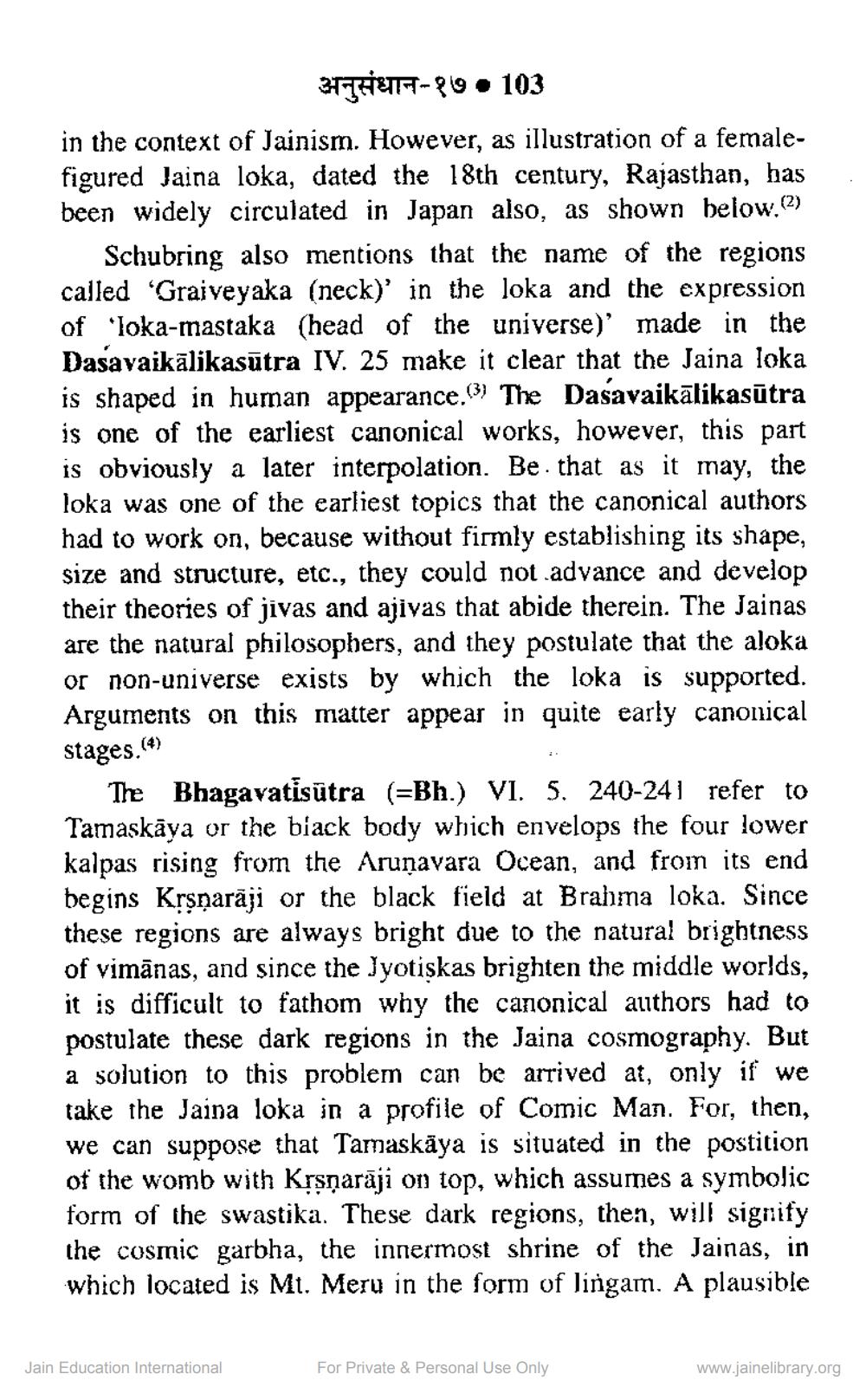________________
अनुसंधान - १७• 103
in the context of Jainism. However, as illustration of a femalefigured Jaina loka, dated the 18th century, Rajasthan, has been widely circulated in Japan also, as shown below. (2)
(3)
Schubring also mentions that the name of the regions called 'Graiveyaka (neck)' in the loka and the expression of 'loka-mastaka (head of the universe)' made in the Dasavaikālikasūtra IV. 25 make it clear that the Jaina loka is shaped in human appearance. The Dasavaikālikasūtra is one of the earliest canonical works, however, this part is obviously a later interpolation. Be that as it may, the loka was one of the earliest topics that the canonical authors had to work on, because without firmly establishing its shape, size and structure, etc., they could not advance and develop their theories of jivas and ajivas that abide therein. The Jainas are the natural philosophers, and they postulate that the aloka or non-universe exists by which the loka is supported. Arguments on this matter appear in quite early canonical stages.(4)
The Bhagavatisūtra (=Bh.) VI. 5. 240-241 refer to Tamaskaya or the black body which envelops the four lower kalpas rising from the Arunavara Ocean, and from its end begins Kṛṣṇarāji or the black field at Brahma loka. Since these regions are always bright due to the natural brightness of vimānas, and since the Jyotiskas brighten the middle worlds, it is difficult to fathom why the canonical authors had to postulate these dark regions in the Jaina cosmography. But a solution to this problem can be arrived at, only if we take the Jaina loka in a profile of Comic Man. For, then, we can suppose that Tamaskaya is situated in the postition of the womb with Kṛṣṇaraji on top, which assumes a symbolic form of the swastika. These dark regions, then, will signify the cosmic garbha, the innermost shrine of the Jainas, in which located is Mt. Meru in the form of lingam. A plausible
Jain Education International
For Private & Personal Use Only
www.jainelibrary.org




